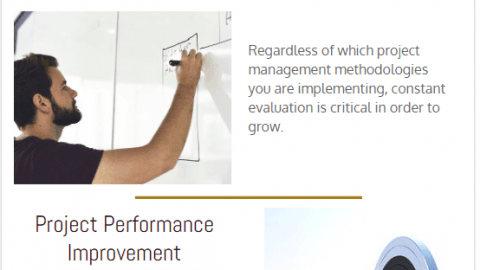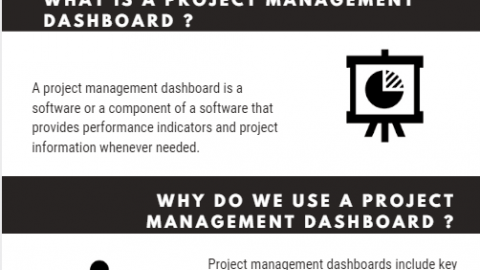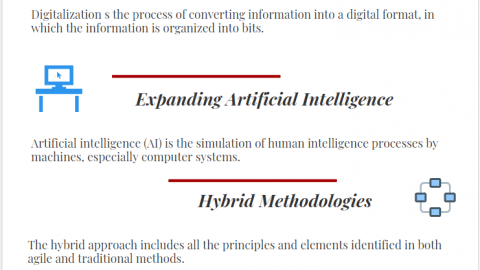Stakeholder Identification in Project Management
Stakeholder identification is an initial phase in project management. Typically, stakeholders can be defined as the individuals, groups, and/or organizations who can affect or be affected by a project. They can be categorized as primary, secondary, internal, external, junior, senior, etc. They often influence projects with their expectations and needs. There can be many stakeholders depending on the type, scope, and complexity of the project. For successful project management, key project stakeholders should be identified and managed in order to satisfy their requirements. In this article, we will review the stakeholder identification techniques and the processes used for that purpose. Understanding the importance of stakeholder identification techniques will increase the efficiency of your stakeholder analysis and management system.
Table of Contents
What is a Stakeholder?
According to the PMBOK Guide “A stakeholder is an individual, group, or organization who may affect, be affected by or perceive itself to be affected by a decision, activity, or outcome of a project.”
As per the definition, stakeholders can be either an individual or a group. They have any kind of interest in your project or are affected by the project or its outcome.
Stakeholders can be:
- National Authorities
- Local Communities
- Business Groups
- Non-governmental organizations (NGO’s)
- Organizations
- Creditors
- Employees
- Material Suppliers, Vendors
- Customers
- Unions
- Project Team, General Manager, Project Manager, Project Coordinator, Board of Members
Importance of Stakeholder Identification
During the stakeholder analysis and identification process, the questions you’ve answered about each stakeholder will provide you a guideline to develop your strategy to interact with each stakeholder.
You use all of the information you’ve collected during the stakeholder identification process to develop your strategy to manage stakeholders. In order to ensure successful project management, you need to establish a system to understand who needs what information and when your stakeholders need it.
It is obvious that projects that come to a successful end most often achieved by fulfilling the requirements of stakeholders. Stakeholder’s participation and expectations are not the same within a project. Also, their degree of involvement and influence is different.
A project can not be completed without the support of its key stakeholders. Therefore, as a project manager, you must know the importance of stakeholder identification and classification to deal with them according to their effect on the project.
Stakeholder Identification Process
Stakeholder identification is a process of determining who your project’s stakeholders are and what can be their effects on your project’s objectives. It takes place before the process of stakeholder analysis. It is critical to identify the stakeholders in the early phases of a project and manage them throughout the entire project’s life cycle.
Typically, at the beginning of a project, everything is quite complicated. Therefore it is difficult to understand who is affected by the project. Stakeholder identification is a perpetual process because as the project progresses new stakeholders arise and some of them may disappear. There are many useful tools and techniques that can be used for stakeholder identification and analysis.
Below stakeholder identification techniques and exercises may be helpful for identifying stakeholders within a project.
Review the Project Documents for Stakeholder Identification
Project documents may provide valuable information for identifying stakeholders. Reviewing contract documents, project charter, organizational process assets, and documents of the past projects can be helpful. Historical stakeholder registers related to your project or region can provide you invaluable information that helps you to save time.
• The contract document provides the names of parties, public enterprises, agents, etc. Also, it will be helpful to determine the suppliers, vendors, organizations.
• The project charter can be used to get the names of your projects sponsor, the names of your top management, and related people.
• Organizational process assets include information about your company’s past projects and stakeholders.
• Government regulations and industry standards may also provide some stakeholder information.
• National authorities related to your project are your project’s key stakeholders.
• Social impact assessment studies and environmental monitoring reports may provide information for stakeholder analysis.
Brainstorm With Your Project Team
Brainstorming is another method to identify the stakeholders. Conducting a brainstorming session with your project team provides you a different point of view.
During a brainstorming session, try to answers the following questions:
- Who is actively involved with the project?
- Whose interests are affected by the work performed?
- Who has a fundamental impact on the organization’s performance?
- Who can play an important role in the project’s success or failure?
- Who is the end-user of the product?
- Who are the competitors?
- Who are the shareholders?
- Who is affected directly and/or indirectly by the project?
- Who may affect directly and/or indirectly the project?
- Who are the vendors?
- Who are the local communities?
Organizing a set of brainstorming sessions will be helpful for stakeholder identification, analysis, and classification because it helps the project team to be aware of the potential project stakeholders.
Communication
Identification of stakeholder representatives and communication with them may provide you a large number of stakeholder information.
Stakeholder representatives may be elected representatives, traditional representatives, politicians, leaders, religious leaders, etc.
Establishing good communication channels with governmental authorities and keep them informed of the project’s progress may provide their support. Especially local governmental authority’s support can be critical for your project’s success because they may have close relationships with your stakeholder representatives.
It is not possible to communicate with all the project’s stakeholders. By communicating with highly influential stakeholders and experts you can gain a lot of information about the stakeholders.
Stakeholder Register for Identification
The stakeholder register is an important project document that includes the information related to the project’s stakeholders. A stakeholder register is created together with the identification of stakeholders. Typically a stakeholder register may include the below information;
- Name,
- Contact Information
- Title
- Role on Project
- Interests
- Expectations
- Influence
- Impact
- Category
- Power
- Internal/External
The list of owners is often too short and the list of customers may be too long. This is where the stakeholder register comes into play. It helps you to document who is pursuing which interests in each case and whose expectations are more important for your project’s objectives.
Summary
In a project, all the stakeholders do not have the same effect or influence and they are not affected in the same way. In addition to that, all the stakeholders do not have the same benefit from the project. Stakeholders should be identified in the early phases of the projects and managed throughout the project life cycle.
The stakeholder identification process starts at the beginning of the project and ends at the end of the project. A stakeholder register that records all the information of stakeholders should be prepared and updated frequently. Identification of stakeholders and determination of their expectations, requirements, interests are important processes for successful project management. It should not be forgotten that stakeholders and their interests may change over time. Note that understanding the importance of stakeholder identification will increase the efficiency of your stakeholder management system.
See Also

Over 20 years in portfolio management, streamlining business processes, and systems integration. Utilizing best practices: PMI, Scrum, Agile, Kanban, Lean/Six Sigma, CMMI, ITIL and MOF. Extensive experience in managing in cross functional environment, getting to the root of the problem, bringing stakeholders together to resolve them. Vice President at Force3M Training.












All projects everywhere ought to be scoped in the interest of stakeholders. Project management as a field ought to integrate this notion from the fields of social innovation and social enterprise.
Project managers too often are taught to perception manage changes in project scope for stakeholders.
There is always an alternative of more project manager creativity and more project collective intelligence to figure out how to ensure all initial scopes and changes of scope reflect the interest of all stakeholders.
Project managers can help to go the extra mile in considering the implications of scope for stakeholders.
Project managers are responsible in approving an initial scope or approving modifications to scopes for the implications of these decisions for stakeholders. They should leverage processes to go the extra mile and take responsibility for these implications.
They can use tools like scenario planning, cost benefit analysis, design thinking, these area all processes that can happen before an initial scope or a revision of scope creates harm for stakeholder or misses unique opportunity for positive impact on stakeholders.